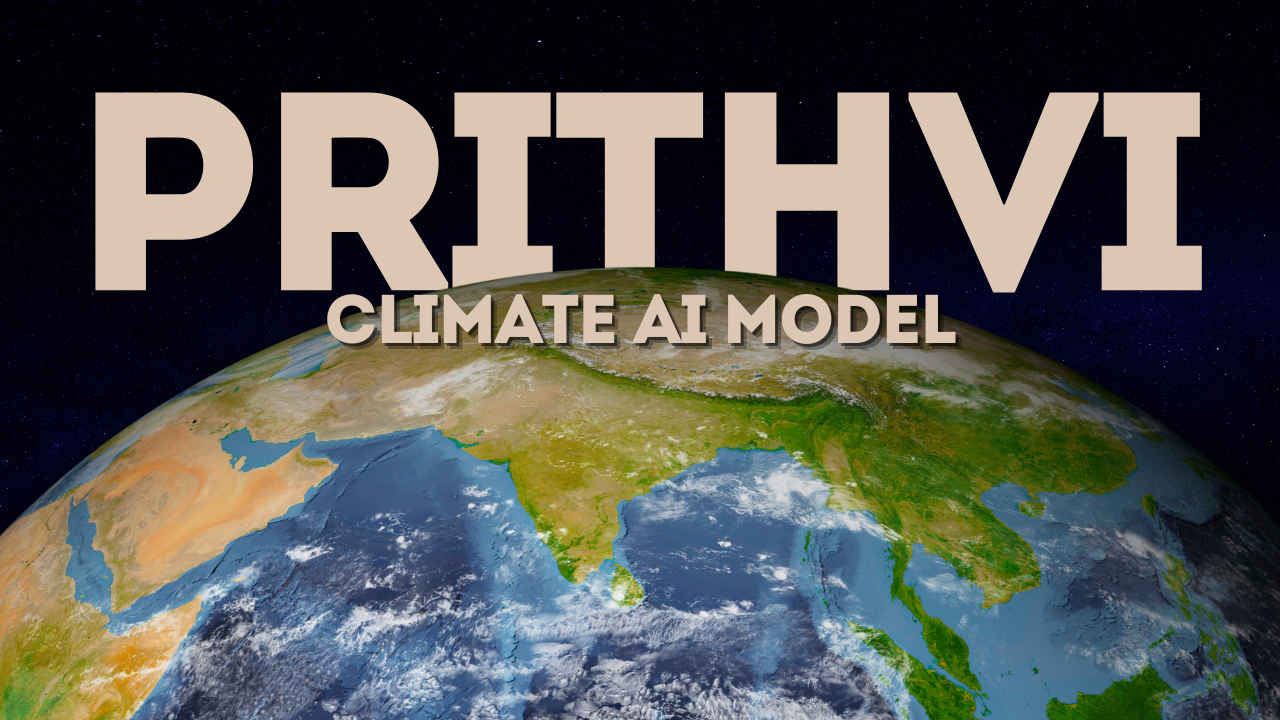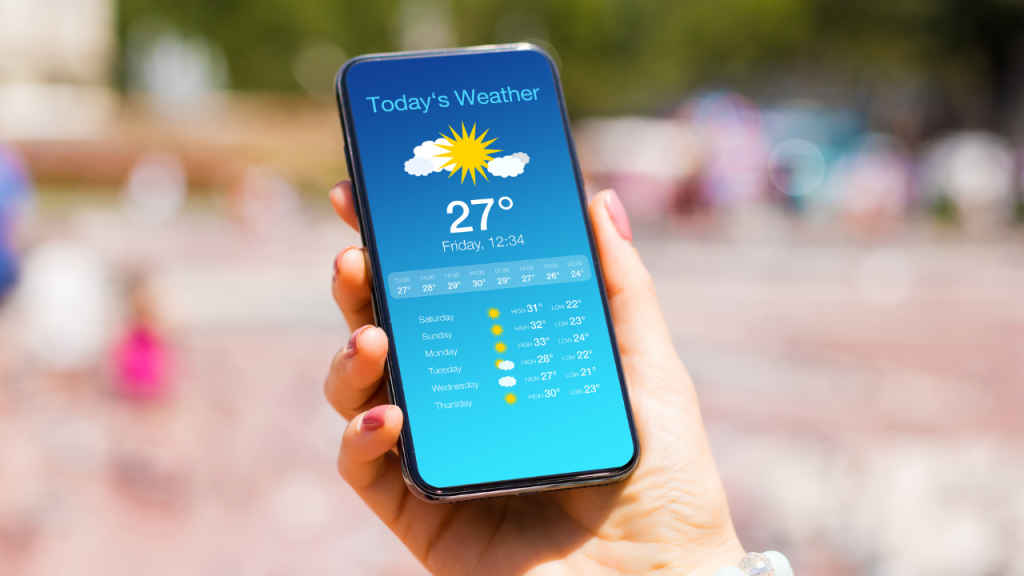Meet Prithvi, NASA & IBM’s free AI model for better weather prediction

When I heard that NASA and IBM had teamed up to release an open-source AI model for weather and climate applications, somehow it didn’t feel like just another tech announcement. At a time when all of us here in India (and around the world) are increasingly at the mercy of freak weather events and climate change, Prithvi WxC – the name of the open-source AI model jointly released by NASA and IBM – could be a significant moment.
 Survey
SurveyAlso read: How computer vision and AI will automate toll booths on Indian roads and highways
Combine NASA’s data with the ingenuity of the open-source community and Prithvi WxC could be a significant leap forward in democratising how we understand and predict our planet’s complex climate systems. But what exactly is this AI model, and how might it change the landscape of climate science?
What exactly is Prithvi WxC AI model
NASA and IBM have co-developed a foundation AI model named Prithvi WxC, which is designed to tackle a range of weather and climate challenges. Unlike traditional models that focus on specific datasets or single use cases – primarily forecasting – this model is much more versatile. It’s been trained on a relatively small cluster of 64 NVIDIA A100 GPUs with 40 years of high-quality Earth observation data from NASA’s MERRA-2 dataset, making it robust and comprehensive.

“We designed our weather and climate foundation model to go beyond limitations so that it can be tuned to a variety of inputs and uses,” explains Juan Bernabé-Moreno, Director of IBM Research Europe, in an official IBM blog. Suffice to say this model isn’t just about predicting if it will rain tomorrow or not, it’s much more than that. It’s a flexible tool that can be fine-tuned for various applications, from local weather forecasting to global climate projections.
Apart from the core Prithvi WxC foundational AI model, IBM and NASA have also released two fine-tuned versions of it – for increasing the resolution of climate data for more accurate localised weather predictions, and another for studying how gravity waves affect Earth’s atmosphere and cloud formation.
What’s special about Prithvi WxC
Traditional climate models are often large, resource-intensive, and focused on specific tasks. Prithvi WxC sets itself apart in several ways. Firstly, it’s designed as a foundation model – which means it’s a starting point that can be tweaked and adapted for multiple purposes. Similar to how large language models like GPT-3 function in natural language processing, for instance.
The @NASA and IBM open-source Prithvi Weather-Climate AI foundation model has been released! The new model can be used to detect and predict severe weather patterns, create targeted forecasts, and improve spatial resolution on global climate simulations.https://t.co/ZG2BRV50p4 pic.twitter.com/MQd8rMpGap
— NASAEarthdata (@NASAEarthData) September 23, 2024
Another feather in its proverbial cap is that despite its complexity, the Prithvi WxC AI model is relatively small with just around 2.3 billion parameters. That’s extremely light compared to some of the gargantuan AI models like Meta’s Llama 3.1 or OpenAI’s GPT-4 that can have hundreds of billion parameters. This efficiency makes the Prithvi AI model more accessible for organisations without supercomputing capabilities. And lastly, the weather and climate AI model is released on Hugging Face, a popular platform for sharing AI projects, thereby ensuring it is accessible to climate researchers and AI developers worldwide.
Needless to say, Prithvi WxC AI model ticks all the boxes for various people to try and build not just a weather app but even a climate-related AI chatbot – imagine how cool that would be!
Also read: PQC encryption standardised: How they secure our digital future in quantum computing era
Karen St. Germain, Director of NASA’s Earth Science Division, highlights the importance of Prithvi’s open-source accessibility. “The NASA foundation model will help us produce a tool that people can use – weather, seasonal, and climate projections to help inform decisions on how to prepare, respond, and mitigate,” she emphasises.
Due to the foundational model nature of Prithvi WxC, there’s several ways to deploy its game-changing AI sauce into derivative applications. By fine-tuning the Prithvi climate model with local data, meteorologists at local weather forecasting stations can generate more accurate and targeted forecasts. Similarly, scientists and researchers can use the AI model for enhanced simulations of global climate conditions for better understanding long-term climate trends and, of course, climate change as well. In early experiments, the Prithvi WxC AI model accurately reconstructed global surface temperatures from just 5% of the original data, suggesting it can fill gaps where there isn’t enough original data for weather estimates or climate projections.

Prithvi WxC’s impact on climate science
Environment and Climate Change Canada (ECCC) is one of the early adopters of this new Prithvi climate AI model, whereby they’re exploring its potential applications with the help of IBM. By ingesting real-time radar data, the model can generate very short-term precipitation forecasts. Additionally, it can improve forecast resolutions from 15 km down to the kilometre scale, enhancing weather prediction accuracy. Imagine something like this being deployed here in India? The value for accurate, hyperlocal weather forecasts is immense in the fields of agriculture, disaster readiness, supply chain management, and logistics companies, just to name a few.
The open-sourcing of Prithvi WxC by NASA and IBM is more than a technical achievement – they’re asking for the global community to act. Making advanced tools accessible ultimately empowers researchers, developers, and organisations to contribute to our collective understanding of the planet. In an era where climate change poses one of the most significant challenges to humanity, innovations like this offer a ray of hope. They enable us to predict, prepare for, and perhaps mitigate some of the impacts of a changing climate.
Also read: SLM vs LLM: Why smaller Gen AI models are better
Jayesh Shinde
Executive Editor at Digit. Technology journalist since Jan 2008, with stints at Indiatimes.com and PCWorld.in. Enthusiastic dad, reluctant traveler, weekend gamer, LOTR nerd, pseudo bon vivant. View Full Profile